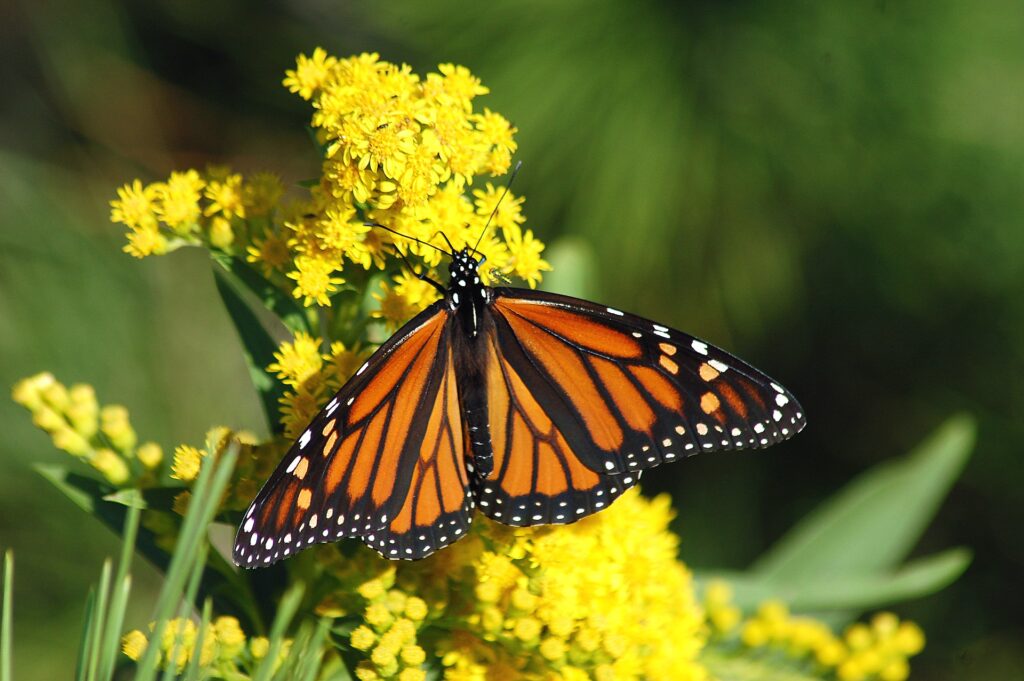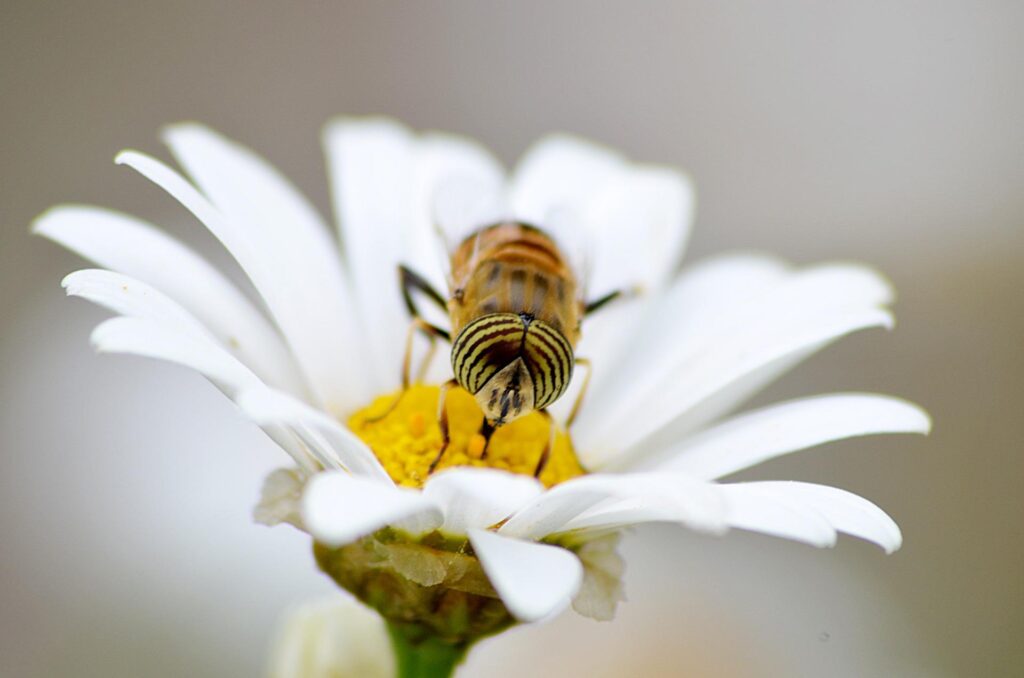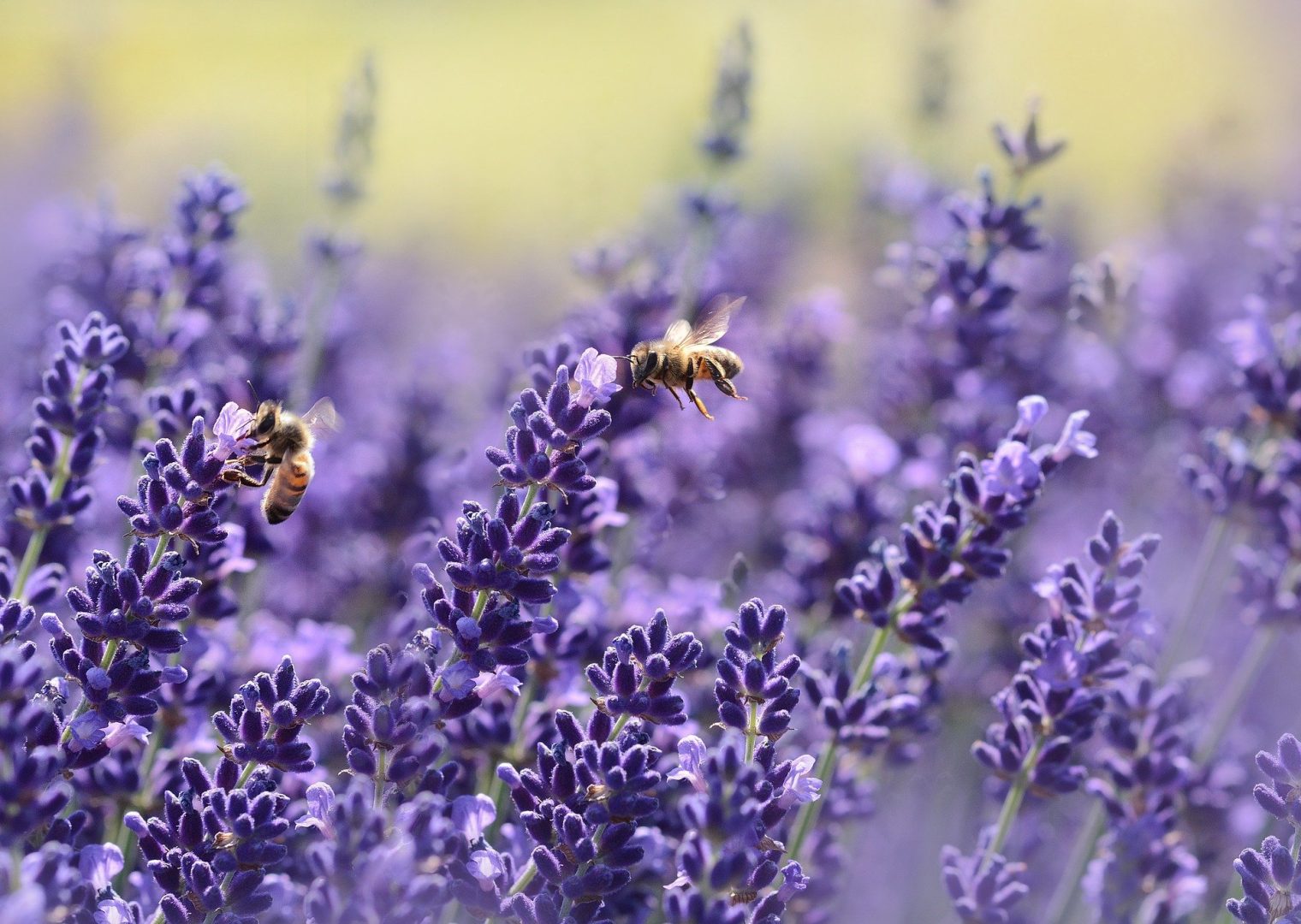Over the past few decades many populations of pollinating species (such as butterflies and bees) in the U.S. have declined significantly due to invasive pests and diseases, pesticides, herbicides, loss of habitat, and climate change. Due to these declines, efforts are being made to conserve, restore, and maintain habitats that are valuable to pollinators. These efforts include the University of Illinois-Chicago (UIC) led Candidate Conservation Agreement with Assurances (CCAA) for the monarch butterfly (Danaus plexippus) and the CCAA/Safe Harbor Agreement (SHA) for bumble bees that is currently in development.
Monarch Candidate Conservation Agreement with Assurances (CCAA)

The Monarch CCAA was finalized in April 2020. Since then participation and interest in the program from the energy and transportation sectors has grown with 20 energy and 15 transportation applicants throughout the U.S., thus far.
The Monarch CCAA program has been very successful. More than 815,000 adopted acres have been committed, of which more than 692,000 acres are under an active CCAA; far surpassing the adopted acres target of 215,000 acres.
If you are interested in applying for the Monarch CCAA, please note that a decision regarding the status of the monarch is expected in 2024. If the monarch is listed as threatened or endangered, no new Monarch CCAA applications will be accepted following its listing.
Bumble Bee CCAA/Safe Harbor Agreement (SHA)
Building on the success of the Monarch CCAA, the UIC and USFWS are exploring the creation of a companion agreement aimed at conserving habitats for six listed or petitioned for listing bumble bee species in North America. The Bumble Bee CCAA/SHA may be extended to cover six additional species in the future.
The proposed Bumble Bee CCAA/SHA would provide similar protections as those in the Monarch CCAA, thereunder an approved CCAA/SHA would allow for incidental take of species covered under the agreement for 25 years. With the updated USFWS rusty-patched bumble bee guidance and rulings of listing status for many bee species expected in 2024, the protection of incidental take permit would be valuable. Also, if the program is successful, some bumble bee species may not need to be listed.

There are 49 bumble bee species in the U.S. Since 2017, two have been listed as federally endangered. Most recently, four have been federally petitioned to be listed, five are at risk, and one was considered unwarranted for listing although it has experienced significant population declines. These 12 species comprise approximately 25 percent of the bumble bee species in the U.S. (Table 1). Species that are at risk, but not currently petitioned to be listed may be petitioned in the future if their populations continue to decline.
Table 1. Bumble bee species being considered for coverage under the Bumble Bee CCAA/SHA and their respective ranges in the United States.
| Species | Status | Range |
| Rusty patched bumble bee Bombus affinis | Federally endangered | From Minnesota to Missouri and to the east coast. |
| Franklin’s bumble bee B. franklini | Federally endangered | California and Oregon. |
| American bumble bee B. pennsylvanicus | Federally petitioned | Most of lower 48 states. Assumed to be extirpated from Oregon and Washington. |
| Variable cuckoo bumble bee B. variabilis | Federally petitioned | From the Midwest to the east coast and Colorado and Arizona. |
| Western bumble bee B. occidentalis | Federally petitioned | Western U.S. |
| Suckley’s cuckoo bumble bee B. suckleyi | Federally petitioned | Most of western U.S. and Alaska. |
| Yellow bumble bee B. fervidus | At risk, but not petitioned for listing | Western, Midwestern, and north-eastern portions of the U.S. |
| Cuckoo bumble bee B. bohemicus (formerly ashtoni) | At risk, but not petitioned for listing | Northern half of the lower U.S. and Alaska. |
| Obscure bumble bee B. caliginosus | At risk, but not petitioned for listing | California, Oregon, and Washington. |
| Southern plains bumble bee B. fraternus | At risk, but not petitioned for listing | East of the Rocky Mountains through the Great Plains region and east to New Jersey and central Florida. |
| Crotch’s bumble bee B. crotchii | At risk, but not petitioned for listing | California. |
| Yellow-banded bumble bee B. terricola | Not warranted | Current range is not known. Most recent records are from Wisconsin and Pennsylvania. Possibly extirpated from other states where it historically occurred. |
Similarities and Differences between Monarch CCAA and Bumble Bee CCAA/SHA
Where Bumble Bee CCAA/SHA adopted acres overlap with Monarch CCAA adopted acres, the following measures are likely to overlap: the implementation and verification of conservation measures used, targeted herbicide application, timed mowing, and idle-habitat set-asides. Additional measures that will likely be required for these areas include the use of bee-preferred seed mixes, invasive species prevention, and the avoidance of commercial bee management.
Further comparisons between the Monarch CCAA and the Bumble Bee CCAA/SHA are provided in Table 2.
Table 2. Comparison of various aspects between the Monarch CCAA and Bumble Bee CCAA/SHA.
| Aspect | Monarch CCAA | Bumble Bee CCAA/SHA |
| Enrollment | Enrolled acres, including adopted acres. | Commitment areas near known locations. |
| Tracking net benefit | Track conservation measures and adopted acres. | Verify conservation measures used in mapped commitment areas. |
| Monitoring | Assess milkweed and nectar plant presence. | Assess flowering plant cover and diversity. |
| Reporting | Annual report describing sum of adopted acres, implementation, monitoring, changes, and challenges. | Will be like the Monarch CCAA except for sum of commitment acres. Tracking will be simplified, monitoring protocol will be different, and reporting will be separate. |
| Section 7 compliance | Tiered approach to verify that actions avoid and minimize take to avoid impacting other listed species. | Maintain consistency with the Monarch CCAA. Currently exploring additional Section 7 consultation for listed species. |
Looking for more information?
Interested in learning more or getting involved in these programs? WSB natural resources staff are actively involved in these programs and have helped multiple entities through the Monarch CCAA application process and beyond.




